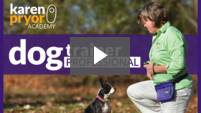By Ken Ramirez
I am excited to be returning to Billund, Denmark for our next ClickerExpo 3-5 November 2017. I met so many wonderful trainers at last year’s Expo in Denmark and I am hoping to see many of them again, as well as meet new trainers. There is always so much new at each year’s Expo and this year I had the opportunity to sit in on a few of the new sessions at our ClickerExpos in the U.S. The great thing about attending ClickerExpo in Denmark is that attendees get to see new material, but we as speakers get the opportunity to test it and perfect it before we come to Europe! I thought I would share just a few of the highlights that I think attendees in Denmark will be excited to see.
Effective Affection – Dr. Jesús Rosales-Ruiz
 Rhythmic petting is one aspect of constructional affection as described by Dr. Rosales-Ruiz.
Rhythmic petting is one aspect of constructional affection as described by Dr. Rosales-Ruiz.Consuming Research without Indigestion – Susan G. Friedman, PhD
Dr. Susan Friedman is always a crowd favorite. One of her new sessions this year exposed attendees to something we’ve never presented at ClickerExpo before: how to evaluate research. Susan conducted a seminar explaining how to critically review research and why we should be careful not to take research at face value. Perhaps most helpful was the accompanying lab. But the lab was not for dogs! They had the chance to rest while the attendees were given examples of real, published, but flawed research. Susan had the participants break into small groups and use the information she had shared in her lecture to critically look at various research synopses. She helped participants focus on rival hypotheses and look for sources of internal validity. We were taught to evaluate research based on eight criteria: history, maturation, testing, instrumentation, regression, selection, mortality, and interaction with selection. Each of these criteria were explained in detail in her lecture prior to the lab. Who knew that poking holes in research could be so much fun? Most of the attendees agreed they would never look at research the same way again!
Thinking Fast and Flow – Emelie Johnson Vegh & Eva Bertilsson
Turn Me On… (Or Not): Inspiring Others to Choose Positive Reinforcement Training – Michele Pouliot
I have to admit my bias in choosing this session as one of my favorites; it is a topic near and dear to my heart. Michele is an engaging speaker, and she drew from her experiences working at Guide Dogs for the Blind as a traditional trainer who helped that organization transition to the use of positive reinforcement. She has travelled all over the world to help introduce these concepts to other guide dog organizations. Based on her experiences, Michele shared personal stories about strategies that worked and ones that did not in convincing trainers and organizations to make the transition. She had wonderful archival footage of guide dog training that spanned more than 75 years. She described the challenges and strategies that could be used in any training discipline. I found it a very valuable and timely seminar that I wish more people would attend.
Dr. No: How Teaching an Animal to Say “No” Can be the Right Prescription – Ken Ramirez
I thought I would mention one of my new sessions because of the volume of email I have received about the topic since January’s ClickerExpo. My goal for the presentation titled “Dr. No . . .” was to generate discussion and get feedback about an unusual procedure I put in place to help resolve a specific problem behavior. I certainly achieved my goal as the comments, suggestions, and questions continue to pour in. The protocol teaches an animal that anytime she chooses, she can touch a buoy target and receive reinforcement. It was an effort to give the animal a choice if she did not want to perform a cued behavior -- a way to say, “no.” It was a protocol reserved for difficult cases where it appeared the animal no longer enjoyed the training process, and the goal was to provide alternative ways to earn reinforcement. Because I have only used this protocol in four cases, there is still not enough data to recommend the protocol, and there was lots of discussion as to whether touching the buoy really meant “no”-- a question I raised myself in the presentation. The most intriguing questions centered around why the protocol resolved the problem in all four cases where it was implemented. I look forward to presenting the topic again and getting more great feedback.
We Just Have to Dish: Science, Training & Nerdy Stuff – Kathy Sdao & Susan G. Friedman, PhD
We decided to try something new and different this year by putting two of our favorite instructors on the stage without a topic and without an agenda and ask them just to talk about training. The results were very well received in the U.S. and we thought we’d try it again in Denmark. By having a knowledgeable scientist and a skilled trainer on the same stage and asking them just to chat about behavior and the impact on their lives there were some unexpected revelations and insights. Because there was no agenda, the topics ranged from how behavior analysis is a part of our everyday lives to specific cases that each of them have dealt with. It was at times funny, at times poignant, and always entertaining and enlightening. There is no doubt that this session is unique and different, but I enjoyed it immensely.
The learning never ends


